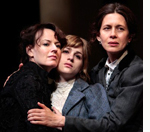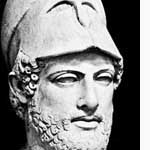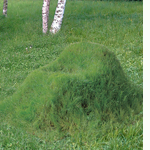Social Design and Relational Design
 I am an architect. Architecture deals foremost with people, not buildings. Architecture deals with how people live, interact, protect themselves etc. As an architect have I never been able to create structures and plans without people. Since I am brought up in theater my way of designing has been to make up plays of life; theatrical events and actually sometimes based my private houses on well known plays that I sat under as a child while my father, an actor in the Reykjavik City Theatre, was rehearsing. One of my better known private house designs in Iceland is based on the play by Anton Chekov: THREE SISTERS, because the family that I designed it for felt like that play.
I am an architect. Architecture deals foremost with people, not buildings. Architecture deals with how people live, interact, protect themselves etc. As an architect have I never been able to create structures and plans without people. Since I am brought up in theater my way of designing has been to make up plays of life; theatrical events and actually sometimes based my private houses on well known plays that I sat under as a child while my father, an actor in the Reykjavik City Theatre, was rehearsing. One of my better known private house designs in Iceland is based on the play by Anton Chekov: THREE SISTERS, because the family that I designed it for felt like that play.
 Why do I have to say this? To clarify the fact that architecture is Social Design. The first town planners were creators of societies, looking out for infrastructural and political solutions for the good of the people. A good example is Pericles, thearchitect of the Acropolis and an influential developer of the society. Often these early planners were military leaders and city planner in the same person. But the situation is more complex today.
Why do I have to say this? To clarify the fact that architecture is Social Design. The first town planners were creators of societies, looking out for infrastructural and political solutions for the good of the people. A good example is Pericles, thearchitect of the Acropolis and an influential developer of the society. Often these early planners were military leaders and city planner in the same person. But the situation is more complex today.
The newly named field Social Design bases its existence on doing social good, for the benefit of society, human relations and sturctures. As stated in Wikipedia: “as the creation of social reality; design of the social world and the shaping of products and services.”
 The fundamental definition of design is: “To make the every day easier, simpler and more beautiful”. It is about humanizing processes like technology, communication, services and strategies. As such, design is fundamental to all human activity. Design has always a social agenda, but this has sometimes been forgotten, for example when services and structures have been created by industrial designers, architects, city planners creating structuralistic solutions based on technical expertice or theoretical functions where relations between structures and processes has become fundamental and not the relation of people. In a sense, the receent term Social Design has come up, to differentiate it from technical design that has often evolved in technical design schools located in engineering faculties.
The fundamental definition of design is: “To make the every day easier, simpler and more beautiful”. It is about humanizing processes like technology, communication, services and strategies. As such, design is fundamental to all human activity. Design has always a social agenda, but this has sometimes been forgotten, for example when services and structures have been created by industrial designers, architects, city planners creating structuralistic solutions based on technical expertice or theoretical functions where relations between structures and processes has become fundamental and not the relation of people. In a sense, the receent term Social Design has come up, to differentiate it from technical design that has often evolved in technical design schools located in engineering faculties.
All design is in its essence active, it thrives on doing, it is visionary and solution oriented – to quote the designer Richard Seymour in the 2007 Intersections Conference: “If you are not positive and with a belief in the future then you should do something less dangerous than design“.
 Relational design. In his book, RELATIONAL AESTHETICS, Bourriaud says ‘Artistic activity is a game, whose forms, patterns and functions develop and evolve according to periods and social contexts’. The case is the same with many design solutions, especially those that deal with situations, like the design of events, space, products and furniture. I am very excited about the development of furniture/product design and interior architecture over the coming years, because the fields seem to have come to saturation. No more of these things are needed in the Western World at least, people are sick of new products every year, extreme makeover shows etc. (see previous blog) There is a need for things and spaces that have stronger emotional values. Thus the interest in relational design and art. I have been following various projects that could be classified as Relational Design, where peope gain attachment with products and services resulting in social contentment and often improved social interaction. I will tell about some of these projects later.
Relational design. In his book, RELATIONAL AESTHETICS, Bourriaud says ‘Artistic activity is a game, whose forms, patterns and functions develop and evolve according to periods and social contexts’. The case is the same with many design solutions, especially those that deal with situations, like the design of events, space, products and furniture. I am very excited about the development of furniture/product design and interior architecture over the coming years, because the fields seem to have come to saturation. No more of these things are needed in the Western World at least, people are sick of new products every year, extreme makeover shows etc. (see previous blog) There is a need for things and spaces that have stronger emotional values. Thus the interest in relational design and art. I have been following various projects that could be classified as Relational Design, where peope gain attachment with products and services resulting in social contentment and often improved social interaction. I will tell about some of these projects later.
Images: Three Sisters / Pericles / Richard Seymour / Grass chair that will only last through emotional attachment to the owner
 January 27, 2009
January 27, 2009
 Posted in: DESIGN, PONDERINGS
Posted in: DESIGN, PONDERINGS

